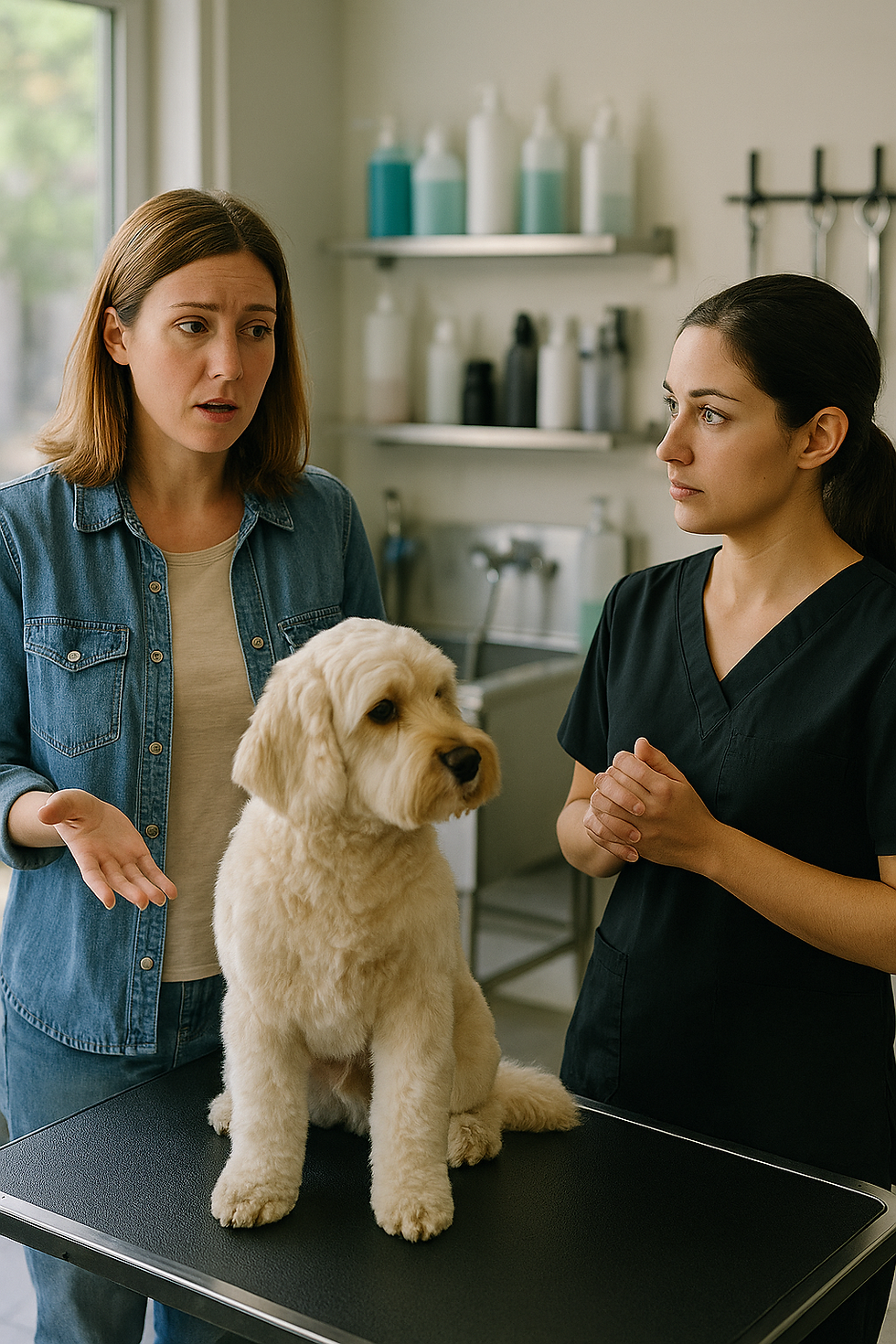Episode 9 – When the Client Has Changed… And We Didn’t Notice
- Nathalie Ariey-Jouglard

- Aug 25
- 2 min read

We’ve known this client for years. We think we know them well: their habits, their preferences, their reactions. And then one day, something shifts: their tone, their feedback, their loyalty.
Often, we don’t see it coming.But the truth is: the client had changed, and we didn’t notice.
The Risk of Routine
With regular clients, we develop automatic habits:
“Same as usual?”“You want the usual cut?”“I know this dog—no need to ask again.”
But this comforting routine can become a hidden weakness:
We forget to check if their needs have evolved.
We miss subtle signs of dissatisfaction.
We don’t realize that the client, their life, or their dog may have changed.
What Changes Might We Be Missing?
Budget changes
They space out appointments, request simpler services, seem tense when paying.
Emotional shifts
They seem distant, less cheerful. Maybe something happened last time that they didn’t mention.
New expectations
They’ve seen trends online, are interested in natural care, or want a new style—but don’t know how to ask.
The dog is aging
More sensitivity, less tolerance, needs more care—and the client expects you to adapt.
How to Stay Connected With Long-Time Clients
Never Assume
Even after ten identical appointments, always ask and confirm:
“Would you like to stick with the same cut, or try something new today?”
Watch for Small Clues
Do they seem less enthusiastic when leaving?
Are they in a rush?
Do their responses feel more closed?
Create Space for Ongoing Feedback
“Did everything go well last time?” “Would you like me to suggest new options next time?”
Update Your Approach
A great groomer doesn’t just repeat, They adjust. They evolve. They grow with the client.
In Summary
Loyal clients are not frozen in time.They change, their dogs change, their needs change.
And when they do, they have every right to.If we don’t change with them, they may quietly look for someone who will.
See you next Monday for Episode 10:
“What If It Wasn’t the Client Who Changed… But Me?”





Comments